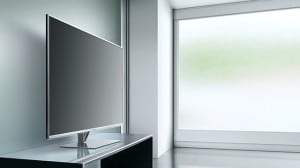SES Working with Over 30 Manufacturers to Create SAT>IP Products
[Via Satellite 04-09-2014] After partnering with Panasonic to produce the first television set capable of Satellite Over IP (SAT>IP), SES believes there is more room to grow. SAT>IP is a communications protocol that takes Digital Video Broadcasting (DVB) data and transfers it into IP format. This enables satellite operators to transport live linear satellite television over an in-home IP network via Ethernet, power line or Wi-Fi.
“What we do is essentially manage and try to grow the [SAT>IP] ecosystem,” explained Thomas Wrede, VP of reception systems at SES. “We offer to those manufacturers a free of charge certification of their devices, because if you have a satellite communications protocol and you let different manufacturers implement it, then interoperability is key. It’s not anything commercial, so we are not involved in any sale of the units. There is no revenue sharing; this is a business opportunity for industry.”
SES and Panasonic revealed the SAT>IP integrated Viera TV at SES Industry Days in Luxembourg. According to Wrede, SES is working with more than 30 manufacturers on enabling SAT>IP clients, and is also working to establish an international standard. SAT>IP can be a hardware device or a software application. Once implemented, it streamlines the process for content delivery to the home.
“Today if you distribute satellite in a home to multiple rooms, you use coax cables and you have a Set-Top-Box (STB) in the living room, an STB in the bedroom and so on,” said Wrede. “With SAT>IP the interesting use case is now you are not bound to coax cable anymore, so you can use any Ethernet technology … once you have a television set that has SAT>IP, it behaves very much like a tablet, so you can use SAT>IP as your source of television programing.”
The second use case for SAT>IP households is the ability to watch TV programs on tablets, phones and other devices. Any Wi-Fi enabled device in the living space can stream content by satellite. Furthermore, it does not require a technician to install. According to Wrede, it takes roughly as much skill to set up as a typical wireless router.
SES expects the use of SAT>IP clients to grow, with most of its early strength stemming from select European markets.
“I really think because of the nature of the market and the ability of people to buy and install these devices, I indeed see it first being launched in the German FTA market,” said Wrede. “The second market segment I see is the U.K. That’s an economically stable market … in the U.K there is a large amount of Free-to-Air (FTA) reception as well where people receive the Freesat platform. That includes the BBC, ITB and some other programming.”
Many of the 30 manufacturers SES is working with, including Panasonic, are active in the German market. Digital signage — screens commonly seen in shopping malls, airports and other public locations — may serve as an early use in other parts of the world. Wrede added that SES is in talks with a North American customer for this type of application.
Outside of Europe it may prove more challenging for SAT>IP to take root. According to Wrede, this is less due to consumers and more about the availability of content.
“In other markets that are more dominated by vertically integrated or Pay-TV operators, you need to convince — from our perspective — the operator to adopt this technology and integrate it with their anti-piracy conditional access technology, which is a little more difficult and takes more time,” said Wrede. “Those markets would follow at a later point on the timel
